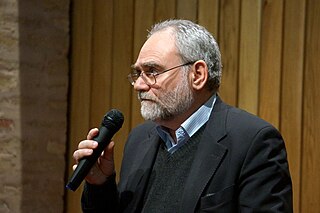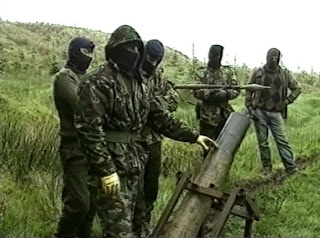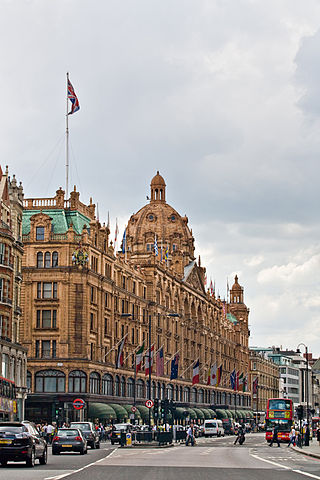Related Research Articles

William Stephen Ian Whitelaw, 1st Viscount Whitelaw, was a British Conservative Party politician who served in a wide number of Cabinet positions, most notably as Home Secretary from 1979 to 1983 and as de facto Deputy Prime Minister of the United Kingdom from 1979 to 1988. He was Deputy Leader of the Conservative Party from 1975 to 1991.

On 12 October 1984, the Provisional Irish Republican Army (IRA) attempted to assassinate members of the British government at the Grand Hotel in Brighton, England. A long-delay time bomb was planted in the hotel by Patrick Magee before Prime Minister Margaret Thatcher and her cabinet arrived for the Conservative Party conference. Five people were killed, including the Conservative MP and Deputy Chief Whip Sir Anthony Berry, and a further 31 were injured. Thatcher narrowly escaped the explosion.

The Carlton Club is a private members' club in the St James's area of London, England. It was the original home of the Conservative Party before the creation of Conservative Central Office. Membership of the club is by nomination and election only.

Patrick Joseph Magee is a former Provisional Irish Republican Army (IRA) volunteer, best known for planting a bomb in the Brighton Grand Hotel targeting Prime Minister Margaret Thatcher and her Cabinet, which killed five people. He is often referred to as the Brighton bomber.

From 1969 until 1997, the Provisional Irish Republican Army (IRA) conducted an armed paramilitary campaign primarily in Northern Ireland and England, aimed at ending British rule in Northern Ireland in order to create a united Ireland.
The 1972 Aldershot bombing was a car bomb attack by the Official Irish Republican Army on 22 February 1972 in Aldershot, England. The bomb targeted the headquarters of the British Army's 16th Parachute Brigade and was claimed as a revenge attack for Bloody Sunday. Six civilian staff and a Catholic military chaplain were killed and 19 were wounded. It was the Official IRA's largest attack in Great Britain during "the Troubles" and one of its last major actions before it declared a permanent ceasefire in May 1972. Official IRA member Noel Jenkinson was convicted and imprisoned for his part in the bombing.

The Grand Brighton Hotel is a historic Victorian sea-front hotel in Brighton on the south coast of England. Designed by John Whichcord Jr and built in 1864, it was intended for members of the upper classes visiting the town and remains one of Brighton's most expensive hotels.
Donald Kaberry, Baron Kaberry of Adel, MC, TD, known as Sir Donald Kaberry, 1st Baronet, from 1960 to 1983, was a Conservative Party politician in the United Kingdom. He served as a Member of Parliament (MP) for 33 years and was later a life peer. On March 13, 1991, he died at aged 83 from his injuries from a 1990 Carlton Club bombing by the Provisional Irish Republican Army.

The Harrods bombing refers to the car bomb that exploded outside Harrods department store in central London, England, on Saturday 17 December 1983. Members of the Provisional Irish Republican Army planted the time bomb and sent a warning 37 minutes before it exploded, but the area was not evacuated. The blast killed three police officers and three civilians, injured 90 people, and caused much damage. The IRA Army Council said it had not authorised the attack and expressed regret for the civilian casualties. After the bombing, the IRA shifted its emphasis towards attacks on military targets in England.
Arthur's was a London gentlemen's club, now dissolved, which was established in 1811 and was disbanded in 1940. Between 1827 and 1940 it was based at 69 St James's Street. It is now best remembered for having built the London clubhouse currently occupied by the Carlton Club.

The Downing Street mortar attack was carried out by the Provisional Irish Republican Army (IRA) on 7 February 1991. The IRA launched three homemade mortar shells at 10 Downing Street, London, the headquarters of the British government, in an attempt to assassinate Prime Minister John Major and his war cabinet, who were meeting to discuss the Gulf War.
On Tuesday evening 18 November 1975 an Irish Republican Army (IRA) unit nicknamed the Balcombe Street Gang, without warning, threw a bomb into Walton's Restaurant in Walton Street, Knightsbridge, London, killing two people and injuring almost two dozen others.
The Balcombe Street Gang was a Provisional Irish Republican Army (IRA) active service unit (ASU) who carried out a bombing campaign in southern England in the mid-1970s. The majority of their attacks and attempted attacks took place in London and the rest in Surrey, Hampshire and Wiltshire. Between October 1974 and December 1975 they carried out approximately 40 bomb and gun attacks in and around London, sometimes attacking the same targets twice. The unit would sometimes carry out two or more attacks in one day; on 27 January 1975 they placed seven time bombs in London.

The Lichfield gun attack was an ambush carried out by the Provisional IRA (IRA) on 1 June 1990 against three off-duty British soldiers who were waiting at Lichfield City railway station in Staffordshire. The attack resulted in one soldier being killed and two others badly wounded.
This is a timeline of the events and actions during the Troubles that were carried out in Great Britain, the vast majority of which were carried out by Irish Republican paramilitaries mainly the Provisional IRA were by far the most active but both the Official IRA and the Irish National Liberation Army, also carried out a number of attacks, which included bombings and shootings. Ulster Loyalist paramilitary groups also carried out a small number of violent actions.
On 12 October 1992, the Provisional Irish Republican Army (IRA) detonated a bomb that had been planted in the gents' toilets in the Sussex Arms pub in Upper St Martins Lane near Long Acre, London, killing a man and injuring seven other people.

The London Stock Exchange bombing occurred on the morning of 20 July 1990 with the explosion of a 5 to 10 lb bomb of high explosives inside the London Stock Exchange building in the City of London, England, planted by the Provisional IRA. The building and surroundings were evacuated after the IRA gave a telephone warning 40 minutes prior to the explosion, and thus nobody was wounded. But the bomb's strength blew a 10-foot hole inside the Stock Exchange Tower, and caused massive damage to the visitors' gallery on the first floor. The bomb was placed in the men's toilets behind the gallery. The gallery and public viewing area was forced to close in 1992.

The Biddy Mulligan's pub bombing occurred on the night of Saturday 20 December 1975 with the explosion of a 3 to 5 lb bomb at Biddy Mulligan's, an Irish pub on the corner of Kilburn High Road and Willesden Lane in northwest London. The device, left in a holdall, caused five injuries and damaged the premises.

The Talbot Arms pub bombing took place on 30 November 1974, and was carried out by the Provisional Irish Republican Army (IRA). Eight people were injured in the attack, which involved the IRA throwing homemade bombs through the pub's window. Only one of the devices exploded; the other was taken as evidence and used to discover how the unit assembled its devices.
References
- ↑ "Car bomb kills lawmaker in Britain". Associated Press. 30 July 1990.
- ↑ "I.R.A. Says It Bombed Tory Club in London". New York Times . 27 June 1990.
- ↑ "Carlton Club bombed by IRA". bufvc.ac.uk. British Universities Film & Video Council. Retrieved 28 July 2021.
- ↑ "Lord Lexden, historian of the Carlton Club, pays tribute to Margaret Thatcher on behalf of the Club". Lord Lexden OBE. 9 April 2013.